illegal immigration
A blanket amnesty for illegal migrants would be a disaster for Canada: David L. Thomas for Inside Policy
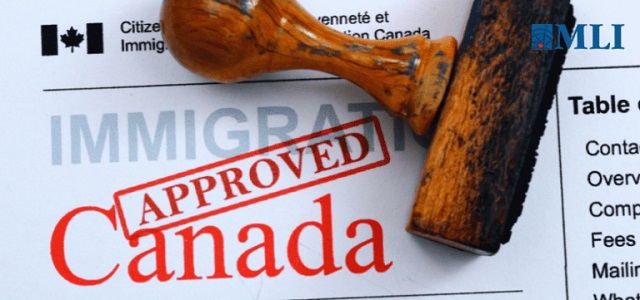
From the Macdonald Laurier Institute
By David L. Thomas
The prospect of a general amnesty for illegals in Canada will be the final straw. How can there be any shred of integrity left in our immigration system if we reward those who broke the rules?
The Liberal government’s proposal to grant a pathway to citizenship to “undocumented” people who are in Canada illegally is a risky strategy and likely to backfire. It will be seen as an open invitation to billions of people around the world to come here, break our immigration laws, and eventually be rewarded for it.
In my years as an immigration lawyer, I met countless people who dreamed of one day possessing a Canadian passport. Holding one would unlock a world of opportunity in Canada. But it also has another attractive feature: Canadian passport-holders can travel visa-free to 188 countries. When I began my legal career, we used to say there were only about 20 “good passports” in the world – passports that allowed unrestricted travel abroad and a good standard of living in the home country. Given general rises in prosperity and geopolitical progress (think the fall of the Berlin Wall), I would argue the number of “good passports” has risen to about 45.
Of course, that means there are still around 155 “not-so-good passports” issued by other countries, where the majority of the world’s population happens to reside. Given that only a few countries actively promote immigration (Canada leads in this respect, followed closely by Australia and New Zealand) it is easy to see why Canadian citizenship is in such high demand.
Some activists argue there should be no borders – that “no one is illegal.” They are grossly underestimating the demand. If a border-free world popped into existence tomorrow, many estimated 250 million people would immediately choose to relocate. Some have put that number as high as 750 million. I believe these estimates are outdated and perhaps naïve. Surely the number today would be in the billions.
A recent survey suggested that 69 million Chinese would like to move to Canada, if they could. The same survey showed 137 million Chinese are considering moving to the US (Canada would be their second choice). Another survey indicated that almost 75 percent of Indians are seeking to emigrate, and 35 percent are actively working towards it (India has a population of 1.4 billion). A Gallup World Poll in 2017 showed a growing worldwide trend in the desire to relocate to a new country. In Sub-Saharan Africa, with a population of 1.24 billion, 33 percent indicated a wish to emigrate. In Nigeria alone, 48 percent indicated a desire to emigrate permanently (the population of Nigeria is 229 million).
Prior to 2017, Canada – surrounded by three oceans and neighbouring the United States – had reasonable control of its borders. Illegal border crossings were not that common. Some might recall in 1999 when four rusty ships washed ashore on western Vancouver Island, having transported 599 illegal migrants from Fujian, China. The federal government responded quickly – deporting 330 migrants and granting three dozen refugee status. As for the rest, well, they just disappeared.
Even though more than two hundred migrants slipped through the cracks during that 1999 event, that seems like a tremendous success compared to the open invitation Prime Minister Justin Trudeau made to the world in an infamous January 2017 tweet. In response to the inauguration of President Donald Trump and his promise to clamp down on illegal immigration, Trudeau posted on Twitter: “To those fleeing persecution, terror & war, Canadians will welcome you, regardless of your faith. Diversity is our strength #WelcomeToCanada.”
Many undocumented migrants in America saw this as an open invitation to simply walk across our border. By the end of 2018, more than 50,000 people had crossed into Canada illegally, most of them through Roxham Road in Quebec, at the border with upstate New York.
In 2019, a CBC reporter made these observations about the Roxham Road crossing:
But the majority of those who come here to Plattsburgh, N.Y., by bus, train or plane have spent little time in the U.S., arriving on tourist visas with the intent of treading the footpath to Canada. When CBC News visited the crossing recently, in one day we met families and single travellers from Pakistan, Turkey, Yemen, Lebanon, Nigeria, Sri Lanka, Eritrea, as well as a Palestinian family from the occupied territories. Some arrived with what appeared to be fresh baggage tags from overseas flights into New York. Others had made their way north from Mexico, South and Central America.
In 2017, Haitians who had overstayed their 2010 earthquake disaster-related visas in the United States formed the largest group of migrants illegally entering Canada. Trump had specially targeted this group, although, in the end, his administration made few deportations. By 2018, however, nearly 75 percent of illegal migrants at Roxham Road had freshly arrived from Nigeria. They had obtained valid US visitor visas in Nigeria, but it was widely believed to be part of a scheme in which the visa recipients understood they had to immediately leave the US by walking into Canada.
Trudeau could have easily stopped this charade at any time by amending the Safe Third County Agreement with the US (which he eventually did in 2023). But at the time, he instead dispatched then Immigration Minister Ahmed Hussen to Nigeria to try to persuade US officials to stop issuing so many dubious visas.
Even though authorities have since closed Roxham Road and similar illegal crossing points, Canadians are still feeling the repercussions of this open-border policy – and will be for years. There are still about 7,300 refugee claimants being housed in 36 hotels, mostly in southern Ontario, who on average each cost Canadian taxpayers about $208 per day. The total price tag for Trudeau’s 2017 tweet is already in the billions of dollars and ongoing.
Without question, surely some of the 113,000 people who walked into Canada since 2017 are legitimate UN Convention-definition refugees. Equally clear is that many are economic migrants, and others are just queue-jumpers looking for an easy way in. Moreover, if you were an undocumented person in the US with criminal charges outstanding, a swift exit into Canada across Roxham Road would seem extremely attractive. You could arrive without identification and make up a new identity. Why not? We have no idea how many criminals or terrorists may have walked in.
In the 2000s, when I was still actively practicing immigration law, there were many Mexican citizens working illegally in Vancouver. It was the same in Toronto. Some years earlier, the Liberal government had dropped the visitor visa requirement for Mexican citizens. It resulted in a flood of people over-staying their lawful period of admission as well as a deluge of Mexican refugee claims made within Canada. In 2009, Prime Minister Stephen Harper put an end to the madness and required Mexican citizens to apply for visitor visas.
Canada has established, objective standards in place for determining which countries should be exempt from our visitor visa requirement. In 2016, Trudeau hosted Mexican President Enrique Nieto in Ottawa. Nieto urged Trudeau to remove the visitor visa requirement for Mexican citizens. Trudeau ignored the objective standards and promised Nieto he would do so. (This resulted in immediate protests from Bulgaria and Romania, who also didn’t meet our standards. To avoid controversy, Trudeau removed their visa requirements as well.)
Unfortunately, removing the visitor visa requirement for Mexicans turned out to (again) be an unmitigated disaster. For instance, in 2023, there were more than 25,000 inland refugee claims from Mexico alone. Fast forward to 2024, and Trudeau had no choice but to reverse his decision – since February of this year, most Mexicans are required to apply for a visitor visa.
Canada also has a poor record for removing failed refugee claimants as well as non-Canadians who have committed crimes in Canada. Most people who have been issued deportation letters since 2016 are still in Canada. Moreover, if Donald Trump is elected this fall, he has promised a massive deportation effort to deal with illegal immigrants in the US, many of whom may be tempted to illegally escape into Canada.
Marc Miller, the current immigration minister, estimates there are between 300,000 and 600,000 people living illegally in Canada –- but even he’s not sure. Unlike many other countries, Canada does not track the departure of non-Canadians. Therefore, it is quite easy for someone whose visitor visa, study permit, or work permit has expired to simply remain in Canada. No one will be knocking on their door because they just aren’t on the radar.
We could begin tracking departures as other countries do, or we could start seriously enforcing our deportation orders. However, this seems to be too much effort. The federal government is apparently attracted to a much easier solution: just let them stay.
Lobby groups like the Migrant Rights Network (MRN) are pressuring the government to offer an amnesty for all “undocumented” migrants in Canada, and to grant permanent status to their family members upon arrival in the future. At a recent press conference calling for amnesty, the MRN estimated that between 20,000 and 500,000 people without immigration status are currently living in Canada.
Since 2017, the City of Toronto has celebrated “Undocumented Residents Day” and this year the City hosted a forum where activists spoke up to encourage the federal government to grant permanent residence to people living in Canada without authorization. Some of the speakers blamed “white supremacy” for shortcomings in our legal immigration system. However, the majority of legal immigrants to Canada have been non-white in every year since 1971.
Shortly after the 2021 federal election, Trudeau issued a mandate letter for his new Immigration Minister, Sean Fraser, that ordered him to explore an amnesty solution. More recently, Minister Miller commented, “There is no doubt that we have made a conscious decision to be an open country.” In May, Trudeau told reporters, “People who aren’t here regularly need to be supported and taken care of. There needs to be either a pathway towards regularization and citizenship, which I know the (immigration) minister is working on.” These recent comments by Trudeau and Miller suggest the Liberals are seriously considering an announcement of an amnesty in the near future.
Until recently, most Canadians were in favour of Canada’s immigration system. The reality today is that most Canadians feel that our immigration levels are too high, with the highest anti-immigration sentiment in decades. Even 42 percent of recent immigrants feel the numbers are excessive. Recently, the Bank of Canada also sounded the alarm, blaming record levels of immigration for driving up the cost of housing.
It is reckless, and possibly, dangerous for the federal government to ignore these warnings. Without broad public support, Canada’s immigration system is doomed. It also risks heightened levels of racism and xenophobia once the broad support is gone.
The prospect of a general amnesty for illegals in Canada will be the final straw. How can there be any shred of integrity left in our immigration system if we reward those who broke the rules? I spoke recently to a retired government immigration program manager who concurs: “An amnesty is pure madness,” he said, “and crushing in its unfairness to all those who have played by the rules.”
What message would a general amnesty send to legal migrants to our country? Why would others go through normal channels to come here? Would an amnesty now undermine future deportation orders? Why would failed refugee claimants or convicted criminals depart Canada? If Canada grants amnesty once, surely Canada will do it again, once the number of illegals bloats again.
If there is any doubt about that, consider the current illegal immigration crisis gripping the United States. In 1986, President Ronald Reagan signed a sweeping immigration reform bill into law. Sold as a crackdown on illegal immigration, it called for tighter security at the Mexican border, with employers facing strict penalties for hiring undocumented workers. As part of the bill, the US government offered amnesty with a path to permanent status to about 3 million undocumented migrants. Supposedly a one-time amnesty, it was to be followed up with strict border controls and other measures to make sure the number of illegals never grew to such a large number again.
Reagan’s amnesty plan was anything but a panacea. Rather, it acted as an invitation to billions of would-be migrants to come to America and break its immigration laws. Although it’s impossible to know the exact number, some estimate the number of illegals in the US today to be around 22 million. Canada is on the cusp of making the very same mistake.
David L. Thomas is a lawyer and mediator in British Columbia and a senior fellow with the Macdonald-Laurier Institute. From 2014–2021, he served as the chairperson of the Canadian Human Rights Tribunal in Ottawa.
illegal immigration
US Notes 2.5 million illegals out and counting

President Trump’s Department of Homeland Security is marking what officials are calling a landmark moment in U.S. immigration enforcement, announcing Wednesday that more than 2.5 million illegal aliens have now left the country since Trump returned to the Oval Office in January. DHS Secretary Kristi Noem said the surge reflects a sweeping, sustained crackdown driven by Immigration and Customs Enforcement teams that — according to internal tallies — have already removed more than 605,000 illegal aliens, most of whom were facing criminal charges or carrying prior convictions. Nearly two million more have opted to self-deport, a wave Noem attributes to stepped-up enforcement and the administration’s aggressive public messaging. She again urged those still in the country illegally to use the government’s CBP Home app, which offers a free one-way flight and a $1,000 stipend to expedite departure.
Senior DHS officials say arrests have climbed as well, with almost 600,000 illegal aliens taken into custody since January 20. “Illegal aliens are hearing our message to leave now,” DHS official McLaughlin said this week. “They know if they don’t, we will find them, we will arrest them, and they will never return.”
The administration argues the impact is being felt far beyond immigration courts and detention facilities, pointing to the U.S. housing market as one of the clearest signs of change. For six straight months, DHS says not a single illegal alien has been released into the interior from the southern border — a dramatic shift after years of mass inflows under President Biden. That decline, they say, is finally filtering into rent and home-price data after years of punishing increases.
Housing and Urban Development Secretary Scott Turner said Americans have now seen four consecutive months of rent decreases — the first sustained drop in years — as fewer illegal aliens compete for housing. Vice President JD Vance emphasized the connection even more bluntly: “The connection between illegal immigration and skyrocketing housing costs is as clear as day. We are proud to be moving in the right direction. Still so much to do.”
Research abroad and at home backs up the administration’s argument. Economists in Denmark released findings earlier this year showing that a one-percentage-point rise in local immigration over a five-year period drove private rental prices up roughly 6 percent and home prices up about 11 percent. The Center for Immigration Studies presented similar data to Congress last year, with researcher Steven Camarota testifying that a 5-percentage-point increase in a metro area’s recent-immigrant share was tied to a 12-percent rise in rent for U.S.-born households.
As DHS leaders frame it, Trump’s second-term enforcement machine is reshaping both border policy and household budgets — an approach they say is finally delivering relief to Americans who spent years squeezed by soaring housing costs and unchecked migration.
illegal immigration
EXCLUSIVE: Canadian groups, First Nation police support stronger border security

First Nation police chiefs join Texas Department of Public Safety marine units to patrol the Rio Grande River in Hidalgo County, Texas. L-R: Dwayne Zacharie, President of the First Nations Chiefs of Police Association, Ranatiiostha Swamp, Chief of Police of the Akwesasne Mohawk Territory, Brooks County Sheriff Benny Martinez, Jamie Tronnes, Center for North American Prosperity and Security, Goliad County Sheriff Roy Boyd. Photo: Bethany Blankley for The Center Square
From The Center Square
By
Despite Canadian officials arguing that the “Canada-U.S. border is the best-managed and most secure border in the world,” some Canadian groups and First Nation tribal police chiefs disagree.
This week, First Nation representatives traveled to Texas for the first time in U.S.-Canadian history to find ways to implement stronger border security measures at the U.S.-Canada border, including joining an Operation Lone Start Task Force, The Center Square exclusively reported.
Part of the problem is getting law enforcement, elected officials and the general public to understand the reality that Mexican cartels and transnational criminal organizations are operating in Canada; another stems from Trudeau administration visa policies, they argue.
When it comes to public perception, “If you tell Canadians we have a cartel problem, they’ll laugh at you. They don’t believe it. If you tell them we have a gang problem, they will absolutely agree with you 100%. They don’t think that gangs and cartels are the same thing. They don’t see the Hells Angels as equal to the Sinaloa Cartel because” the biker gang is visible, wearing vests out on the streets and cartel operatives aren’t, Jamie Tronnes, executive director of the Center of North American Prosperity and Security, told The Center Square in an exclusive interview.
The center is a US-based project of the MacDonald-Laurier Institute, the largest think tank in Canada. Tronnes previously served as a special assistant to the cabinet minister responsible for immigration and has a background in counterterrorism. She joined First Nation police chiefs to meet with Texas law enforcement and officials this week.
Another Canadian group, Future Borders Coalition, argues, “Canada has become a critical hub for transnational organized crime, with networks operating through its ports, banks, and border communities.” The Sinaloa and Jalisco New Generation Mexican cartels control the fentanyl, methamphetamine and cocaine business in Canada, partnering with local gangs like the Hells Angels and Chinese Communist Party (CCP)-linked actors, who launder profits through casinos, real estate, and shell companies in Vancouver and Toronto, Ammon Blair, a senior fellow at the Texas Public Policy Foundation, and others said at a coalition event prior to First Nation police chiefs and Tronnes coming to Texas.
“The ’Ndrangheta (Italian Mafia) maintains powerful laundering and import operations in Ontario and Quebec, while MS-13 and similar Central American gangs facilitate human smuggling and enforcement. Financial networks tied to Hezbollah and other Middle Eastern groups support laundering and logistics for these criminal alliances,” the coalition reports.
“Together, they form interconnected, technology-driven enterprises that exploit global shipping, cryptocurrency, and AI-enabled communications to traffic whatever yields profit – narcotics, weapons, tobacco, or people. Taking advantage of Canada’s lenient disclosure laws, fragmented jurisdictions, and weak cross-border coordination, these groups have embedded themselves within legitimate sectors, turning Canada into both a transit corridor and safe haven for organized crime,” the coalition reports.
Some First Nation reservations impacted by transnational crime straddle the U.S.-Canada border. One is the Akwesasne Mohawk Reservation, located in Ontario, Quebec, and in two upstate New York counties, where human smuggling and transnational crime is occurring, The Center Square reported. Another is the Tsawwassen First Nation (TWA) Reservation, located in a coastal region south of Vancouver in British Columbia stretching to Point Roberts in Washington state, which operates a ferry along a major smuggling corridor.
Some First Nation reservations like the TWA are suffering from CCP organized crime, Tronnes said. Coastal residents observe smugglers crossing their back yards, going through the reserve; along Canada’s western border, “a lot of fentanyl is being sent out to Asia but it’s also being made in Canada,” Tronnes said.
Transnational criminal activity went largely unchecked under the Trudeau government, during which “border security, national security and national defense were not primary concerns,” Tronnes told The Center Square. “It’s not to say they weren’t concerns, but they weren’t top of mind concerns. The Trudeau government preferred to focus on things like climate change, international human rights issues, a feminist foreign policy type of situation where they were looking more at virtue signaling rather than securing the country.”
Under the Trudeau administration, the greatest number of illegal border crossers, including Canadians, and the greatest number of known, suspected terrorists (KSTs) were reported at the U.S.-Canada border in U.S. history, The Center Square first reported. They include an Iranian with terrorist ties living in Canada and a Canadian woman who tried to poison President Donald Trump, The Center Square reported.
“Had it been a priority for the government to really crack down and provide resources for national security,” federal, provincial and First Nation law enforcement would be better equipped, funded and staffed, Tronnes said. “They would have better ways to understand what’s really happening at the border.”
In February, President Donald Trump for the first time in U.S. history declared a national emergency at the northern border and ordered U.S. military intervention. Months later, his administration acknowledged the majority of fentanyl and KSTs were coming from Canada, The Center Square reported.
Under a new government and in response to pressure from Trump, Canada proposed a $1.3 billion border plan. However, more is needed, the groups argue, including modernizing border technology and an analytics infrastructure, reforming disclosure and privacy rules to enable intelligence sharing, and recognizing and fully funding First Nation police, designating them as essential services and essential to border security.
“National security doesn’t exist without First Nation policing at the border,” Dwayne Zacharie, First Nations Chiefs of Police president, told The Center Square.
-
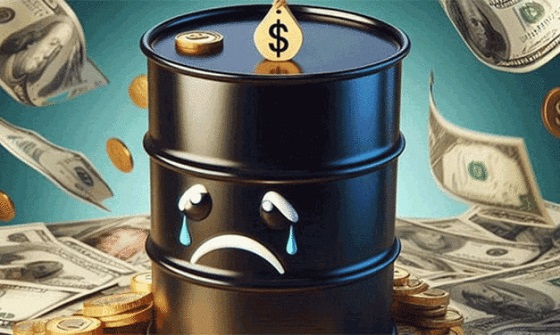
 Business2 days ago
Business2 days agoGeopolitics no longer drives oil prices the way it used to
-

 Business2 days ago
Business2 days agoArgentina’s Milei delivers results free-market critics said wouldn’t work
-

 Censorship Industrial Complex2 days ago
Censorship Industrial Complex2 days agoCanadian university censors free speech advocate who spoke out against Indigenous ‘mass grave’ hoax
-
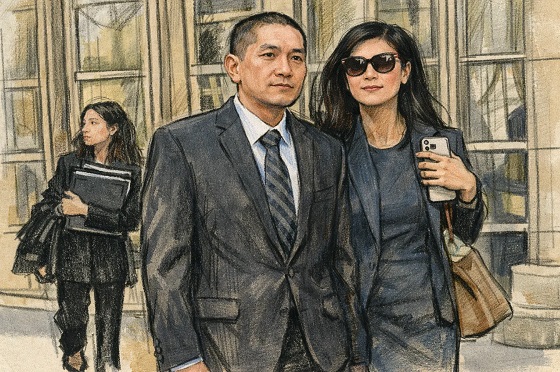
 Business1 day ago
Business1 day agoDeadlocked Jury Zeroes In on Alleged US$40 Million PPE Fraud in Linda Sun PRC Influence Case
-
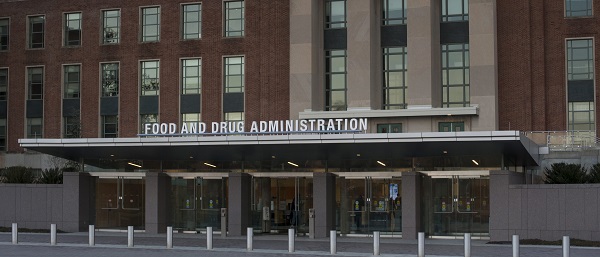
 Daily Caller2 days ago
Daily Caller2 days agoEx-FDA Commissioners Against Higher Vaccine Standards Took $6 Million From COVID Vaccine Makers
-

 COVID-192 days ago
COVID-192 days agoFreedom Convoy protester appeals after judge dismissed challenge to frozen bank accounts
-

 Business21 hours ago
Business21 hours agoTaxing food is like slapping a surcharge on hunger. It needs to end
-
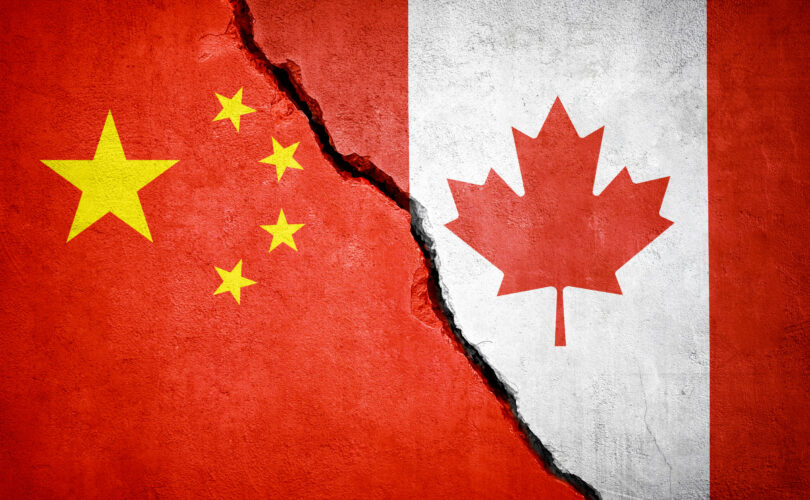
 International1 day ago
International1 day agoOttawa is still dodging the China interference threat









